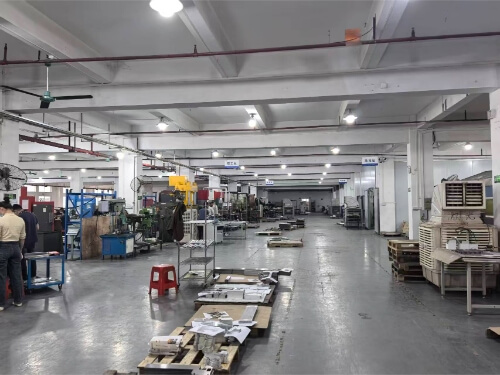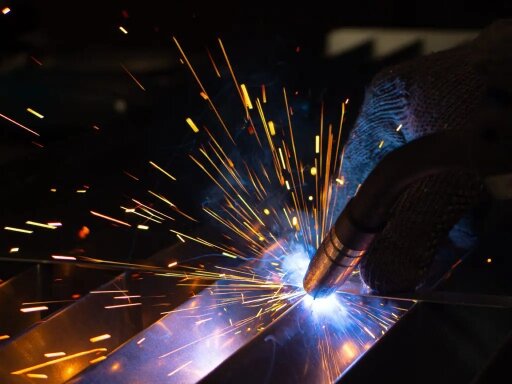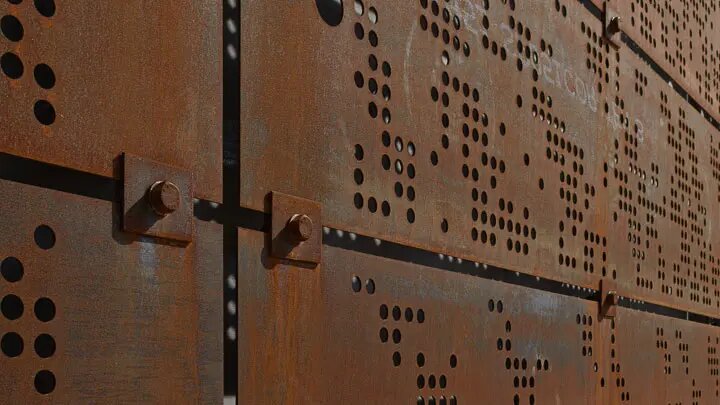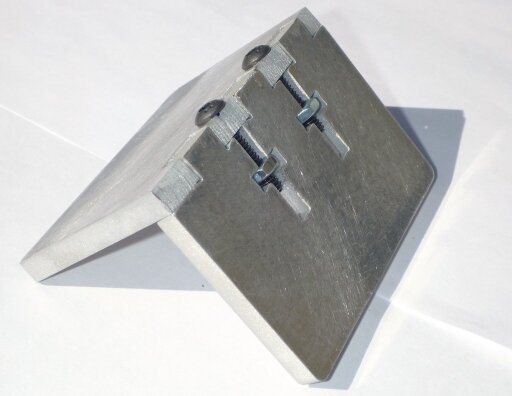Precision sheet metal fabrication is a critical process in manufacturing, especially for industries that require high accuracy and quality. It’s a solution for creating parts with exact specifications, which is essential for many applications. In this blog post, I’ll explain what precision sheet metal fabrication entails and why it’s so important.
Stay tuned as we discuss the importance of precision sheet metal fabrication for your business.
What is Precision Sheet Metal Fabrication?
Precision sheet metal fabrication transforms flat sheets of metal into specific, accurately measured parts and products. This method involves various techniques such as cutting, bending, and assembling to create components with exact dimensions and tight tolerances. The goal is to produce parts that meet stringent quality and performance standards, ensuring they fit perfectly in their intended applications.
General vs. Precision Sheet Metal Fabrication: Key Differences
While general and precision sheet metal fabrication involves shaping sheet metal, their goals and applications differ significantly. Here’s a breakdown of the key distinctions:
Tolerance Levels:
- General fabrication: Allows wider tolerances, meaning some wiggle room for slight measurement variations. This is suitable for projects where exact precision is optional.
- Precision fabrication: Demands exceptionally tight tolerances. Parts must be manufactured to exact specifications, ensuring perfect fit and functionality.
Applications:
- General fabrication: Ideal for creating prototypes, enclosures, brackets, and other parts where precise dimensions are optional.
- Precision fabrication: Perfect for applications requiring high accuracy, such as medical devices, aerospace components, and intricate electronic enclosures.
Equipment and Techniques:
- General fabrication: Often relies on manual processes or less specialized machinery.
- Precision fabrication: Utilizes advanced CNC machinery, lasers, and other high-tech equipment to achieve superior accuracy and repeatability.
Cost:
- General fabrication: Generally more cost-effective due to simpler processes and lower equipment requirements.
Precision fabrication: Typically carries a higher price tag due to the specialized techniques and advanced machinery involved.
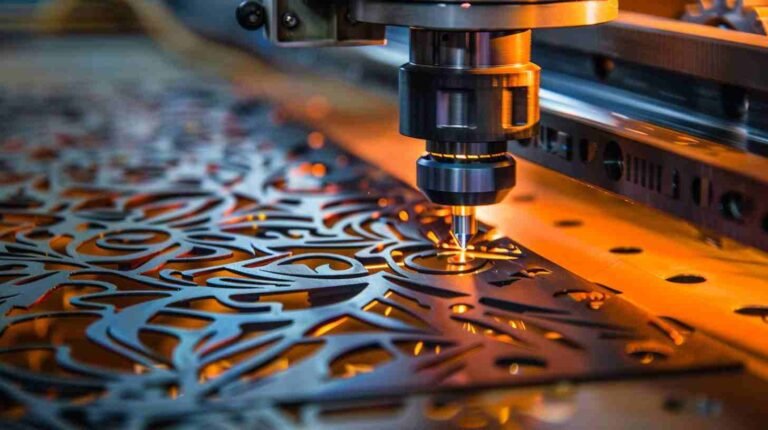
Types of Sheet Metals Used
Materials for precision fabrication are diverse. They range from stainless steel and aluminum to copper and special alloys. The final decision will depend on your application, the environment, and project requirements. Here’s a glimpse into some of the most common options:
- Steel: Known for its strength, affordability, and wide variety of grades.
- Stainless Steel: Combines excellent corrosion resistance, strength, and a sleek aesthetic.
- Aluminum: Lightweight, offers good formability, and resists corrosion.
- Copper: Excellent conductor of heat and electricity.
- Brass: Combines good machinability, corrosion resistance, and a pleasing appearance.
- Titanium: Solid, lightweight, and highly resistant to corrosion.
How to Choose the Right Material?
So, you’ve seen the impressive variety of sheet metals available for your project. But with so many options, choosing the right one can seem daunting. Here’s a helpful guide to navigating the selection process:
Consider the Application:
- What will the final product be used for?
- Does it require exceptional strength, corrosion resistance, lightweight properties, or a specific conductivity?
Think About Functionality:
- Will the part be exposed to harsh elements, require frequent cleaning, or need to withstand high temperatures?
Cost Factors:
- Material cost is an important consideration. While some options, like titanium, offer superior properties, they have a higher price tag.
Formability and Machinability:
- How easily can the chosen material be shaped and machined? This impacts the complexity of your design and fabrication process.
We’re Here to Help!
Don’t worry; you don’t have to navigate this alone. Our experienced engineers at Shengen are happy to assist you in selecting the optimal sheet metal for your project. We’ll consider your requirements and recommend the most suitable material to ensure exceptional results.
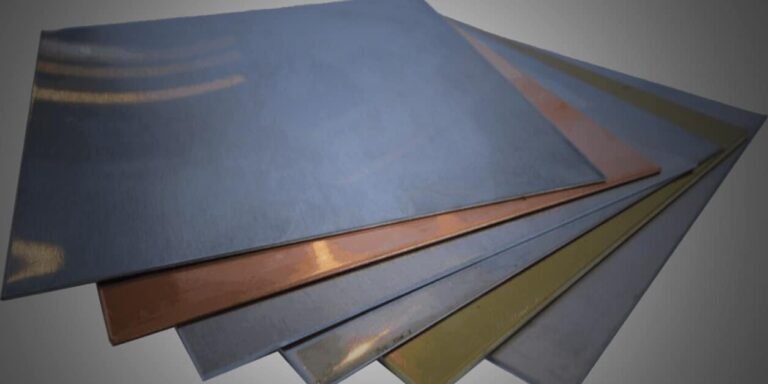
The Blueprint to Success: Starting Your Precision Sheet Metal Design
Design is the first step in precision sheet metal fabrication. It establishes the parameters for subsequent steps and ensures that each component meets specifications. Here are some key considerations:
- Clearly Define Functionality: What is the purpose of the final product? Understanding its function will guide your design choices.
- Detailed Drawings: Create clear and comprehensive drawings using computer-aided design (CAD) software. This ensures accurate dimensions, tolerances, and specifications for fabrication.
- Software Expertise: Familiarity with CAD software designed for sheet metal fabrication is highly beneficial.
- Working with Professionals: Don’t hesitate to collaborate with experienced sheet metal engineers. They can provide valuable insights into design for manufacturability (DFM) principles.
Core Techniques in Sheet Metal Fabrication
Precision sheet metal fabrication utilizes various techniques to transform flat sheets into three-dimensional parts. Here’s a look at some of the core methods:
Cutting Techniques:
- Laser Cutting: Employs a focused laser beam to melt and vaporize metal, creating clean, precise cuts with minimal heat distortion.
- Water Jet Cutting: Utilizes a high-pressure stream of water mixed with abrasive particles to cut through sheet metal.
- Plasma Cutting: Employs a hot plasma torch to melt and blow away metal, resulting in faster cutting speeds than laser cutting.
Forming Techniques:
- Bending: Sheet metal is folded or creased along a straight line using a press brake.
- Stamping: A high-pressure punch and die form specific shapes in the sheet metal.
- Roll Forming: The sheet metal is continuously fed through rollers that progressively bend it into a desired cross-sectional profile.
Joining Techniques:
- Welding: Metals are permanently fused using heat, pressure, or a combination of both. Offers a robust and reliable joining method.
- Riveting: Permanent mechanical fasteners connect two or more pieces of sheet metal. Provides a strong joint without the need for welding.
- Adhesive Bonding: Specialized adhesives create a strong bond between sheet metal parts. Suitable for applications where welding or riveting is not feasible.
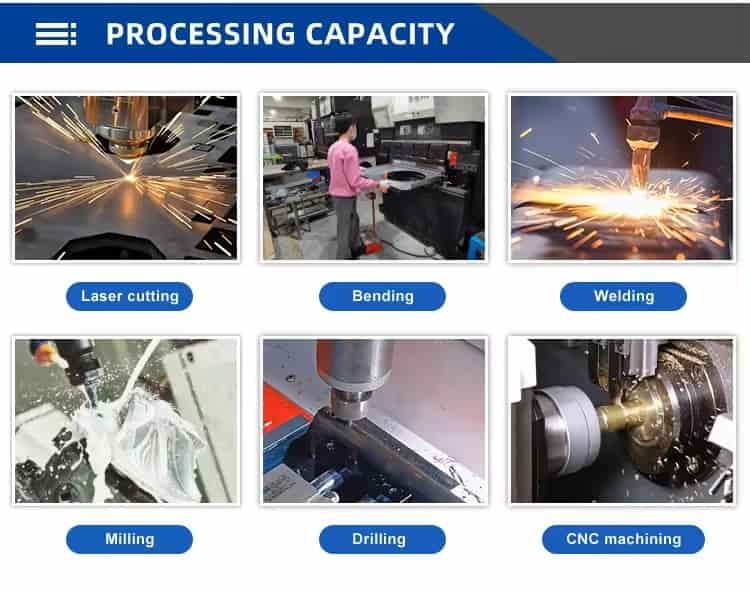
Essential Tools and Equipment
Precision sheet metal fabrication relies on a powerful arsenal of machinery to bring your designs to life. Here’s a glimpse into some of the essential tools:
- Laser Cutters: Laser cutters focus a concentrated beam of light to vaporize material, achieving exact cuts on a vast array of sheet metals.
- Press Brakes: Press brakes use immense hydraulic pressure to bend sheet metal with pinpoint accuracy, transforming flat sheets into complex shapes.
- Punch Presses: These machines use punches and dies to stamp out specific shapes in sheet metal.
- Welding Equipment: Welding equipment utilizes heat and pressure to fuse metal sheets permanently.
Quality Control in Precision Sheet Metal Fabrication
A robust quality control process is implemented to ensure every component meets the highest standards. Here’s a breakdown of the critical methods employed:
Inspection Techniques
- Visual Inspection: Carefully inspect parts for surface defects, flaws, and conformance to design specifications.
- Dimensional Inspection: Verify compliance with all dimensions and tolerances of manufactured parts using precision measuring tools and equipment.
Testing Method
- Non-Destructive Testing (NDT): These advanced techniques allow for comprehensive evaluation of a part’s integrity without causing damage.
- Destructive Testing: In specific situations, controlled destruction of a sample part might be necessary.
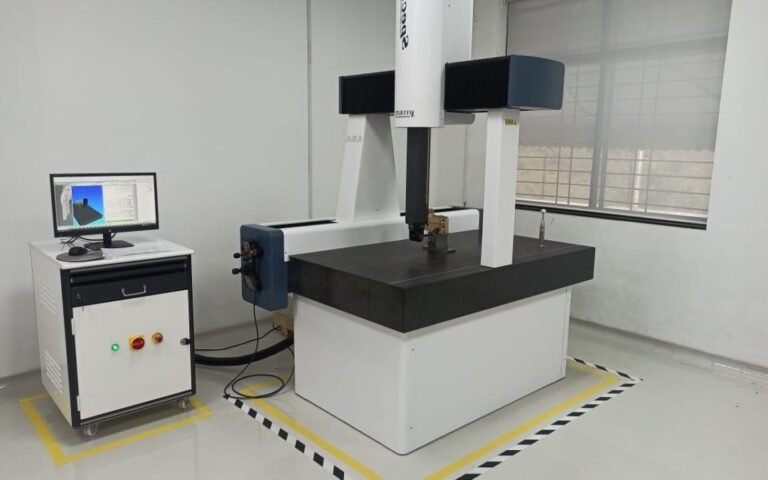
The Terminologies Used in Precision Sheet Metal Fabrication
While precision sheet metal fabrication is a powerful tool, it can come with its technical terms. Below, we will explore some of the key terms and abbreviations you may encounter:
Key Terminology:
- Bend Allowance: The extra material needed for bending to achieve the desired final angle.
- Flange: A lip or edge created by bending a portion of the sheet metal.
- Kerf: The narrow slit left behind by a laser cutting process.
- Tolerance: The allowable deviation from a specified dimension.
Essential Abbreviations:
- CNC: Computer Numerical Control – Machinery controlled by computer programs for precise fabrication.
- CAD: Computer-Aided Design – Software used to create digital models of parts.
- DFM: Design for Manufacturability – Designing parts for efficient and cost-effective fabrication.
- Gage: A unit used to measure the thickness of sheet metal.
Challenges in Precision Sheet Metal Fabrication
Precision sheet metal fabrication, while remarkable, has its challenges. Here’s a look at common challenges and the strategies we use to overcome them:
The Roadblocks:
- Warped Reality: Unwanted bending or twisting (warping) during fabrication can throw off dimensions.
- The Inaccuracy Trap: Even minor deviations from specified cuts can lead to parts malfunctioning.
- Material Waste: Minimizing scrap metal is crucial for cost and environmental reasons.
Mitigation Strategies:
- Machine Mastery: Advanced equipment like laser cutters and press brakes ensure accuracy and minimal distortion.
- Skilled Workforce: Professionals with a deep understanding of sheet metal behavior are invaluable.
- Automation Advantage: CNC technology automates machinery, minimizing human error and ensuring consistent quality.
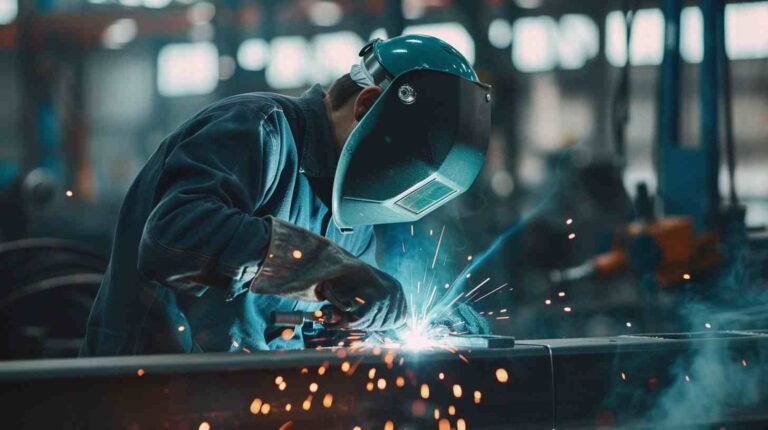
How to Choose the Right Precision Sheet Metal Fabrication Companies?
Your vision deserves a skilled partner to bring it to life. Here’s a guide to choosing the right precision sheet metal fabrication company:
Experience and Expertise:
- Track Record: Look for a company with a proven history of delivering high-quality work in your industry.
- Technical Knowledge: Ensure they have a team of experienced engineers who understand the intricacies of precision fabrication.
Capabilities and Equipment:
- Match Your Needs: Does their machinery align with your project requirements (laser cutting, bending, etc.)?
- Advanced Technology: Modern equipment ensures accuracy, repeatability, and efficient production.
Quality and Communication:
- Quality Commitment: Seek a company with a strong focus on quality control and meeting your specifications.
- Clear Communication: Open and transparent communication throughout the project is essential.
Additional Considerations:
- Customer Service: Responsive and helpful customer service is vital for smooth collaboration.
- Competitive Pricing: Get quotes from multiple companies to ensure you’re getting a fair price.
- Location and Lead Times: Consider the company’s location and typical lead times to meet your project timeline.
Conclusion
Precision sheet metal fabrication is a testament to the enduring power of human creativity. It is a field that seamlessly blends cutting-edge technology with meticulous craftsmanship. From medical marvels to architectural wonders, its impact is undeniable. As technology advances, the possibilities are limitless.
Do you need a reliable sheet metal parts manufacturer? Shengen is the place to go. We specialize in sheet metal laser cutting, bending, surface finish, and CNC Machining. Reach out to Shengen Today and seek help from professionals!
FAQs
What future advancements are expected in precision sheet metal fabrication?
The future is bright for this industry, with exciting possibilities on the horizon:
- Advanced Materials: New lightweight, high-strength materials will expand design possibilities.
- Additive Manufacturing Integration: Combining 3D printing with traditional techniques might offer more complex part creation.
- AI-powered Design and Optimization: Artificial intelligence could revolutionize design optimization and fabrication processes.
What is the difference between sheet metal fabrication and machining?
Both processes create metal parts but differ in their starting material and techniques. Sheet metal fabrication uses flat sheet metal. Techniques such as bending, cutting, and forming transform the sheet into the desired shape. Machining starts with a solid block, bar, or tube. Cutting tools remove material to achieve the final part.
What is the demand for sheet metal fabrication?
The sheet metal fabrication industry is experiencing steady growth, with a market valued at USD 10 billion in 2024 and a projected CAGR of over 4.2% between 2024 and 2032. Furthermore, specific sectors like construction and infrastructure heavily rely on sheet metal products. These applications include roofing systems and structural components that provide support and stability.
More Resources:
Sheet Metal Fabrication Market Growth – Source: GMI
Choosing the Right Sheet Metal for Fabrication – Source: Metafab
Sheet Metal Forming Processes – Source: QuestTech
Hey, I'm Kevin Lee

For the past 10 years, I’ve been immersed in various forms of sheet metal fabrication, sharing cool insights here from my experiences across diverse workshops.
Get in touch

Kevin Lee
I have over ten years of professional experience in sheet metal fabrication, specializing in laser cutting, bending, welding, and surface treatment techniques. As the Technical Director at Shengen, I am committed to solving complex manufacturing challenges and driving innovation and quality in each project.

